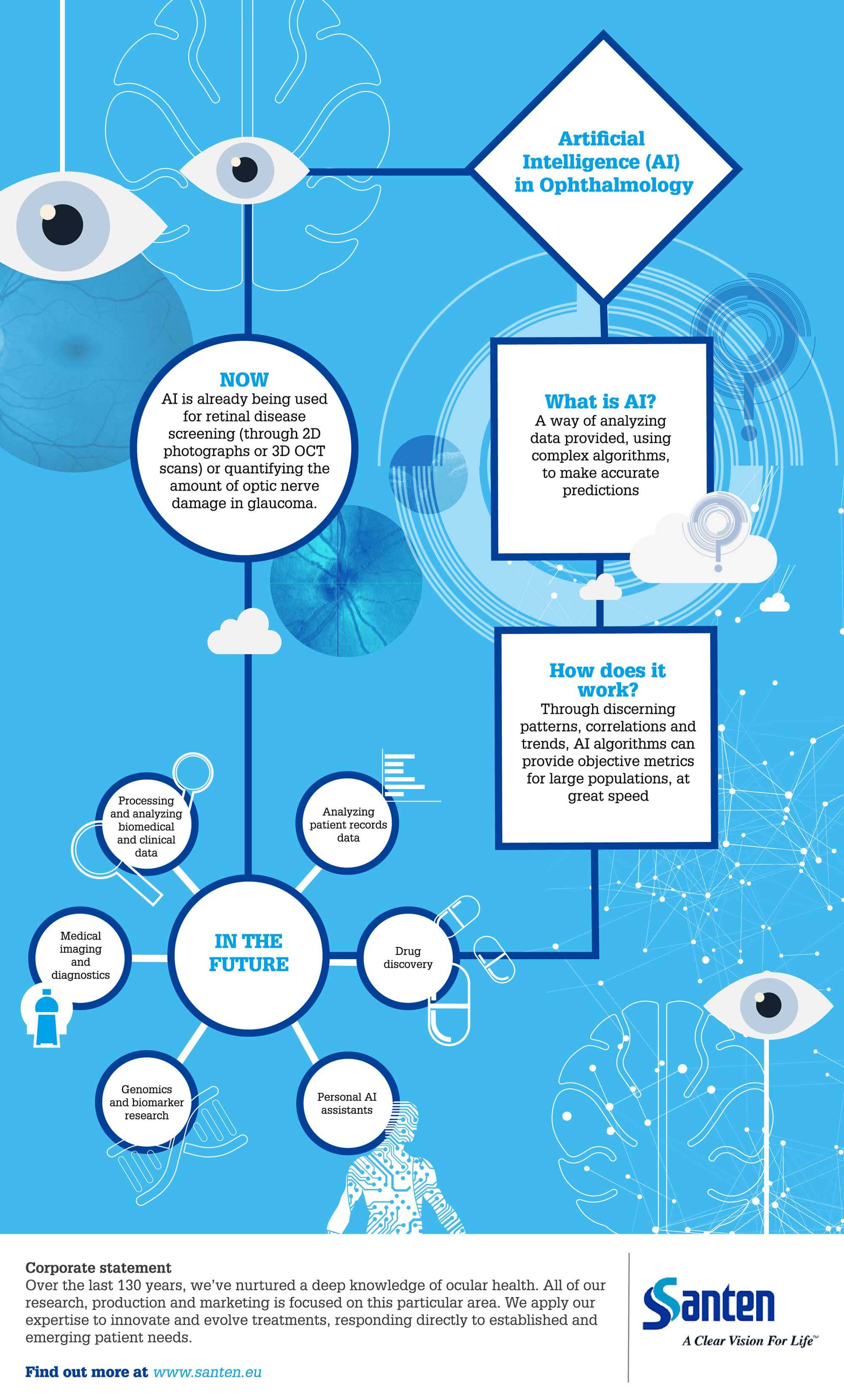
Glaucoma: Building a future with
artificial intelligence (AI)
In this feature, Anthony Khawaja (Consultant Ophthalmologist at Moorfields Eye Hospital and UCL Institute of Ophthalmology, London, UK), Dr. Louis Pasquale (Site Chair of the Department of Ophthalmology at Mount Sinai Hospital, New York City, US) and Dr. Ellie Chabi (Vice President, Glaucoma & Neuroprotection, Santen Inc., US) discuss how this fast-developing technology could transform disease screening and management for glaucoma patients and physicians alike.
“In settings where access to ophthalmic care is limited, AI algorithms teamed with telemedicine could serve as a first-line screening, also triaging patients by severity, potentially helping with resource limitations and backlogs. The same tools could be leveraged to help patients monitor their condition from home almost continuously, thereby serving as an early warning system.”
Dr Ellie Chabi, VP, Glaucoma & Neuroprotection, Santen Inc., US
“We’ve learned about genes associated with primary open-angle glaucoma that produce elevated intraocular pressure. We’re now filling in this genetic architecture such that we could predict which patients will ultimately need surgery. I believe these genetic biomarkers will be part of future AI algorithms, helping us decide if a patient will need more aggressive treatment.”
Dr Louis Pasquale, Site Chair of the Department of Ophthalmology at Mount Sinai Hospital, New York City, US
“The reward lies in the [AI] software’s scalability. The exciting thing is that this software – when it comes – could be deployed widely. If you developed a module that can help identify high-risk patients, you could help prevent unnecessary treatment in low-risk people. The potential impact is enormous.”
Anthony Khawaja, Consultant Ophthalmologist at Moorfields Eye Hospital and UCL Institute of Ophthalmology, London, UK



